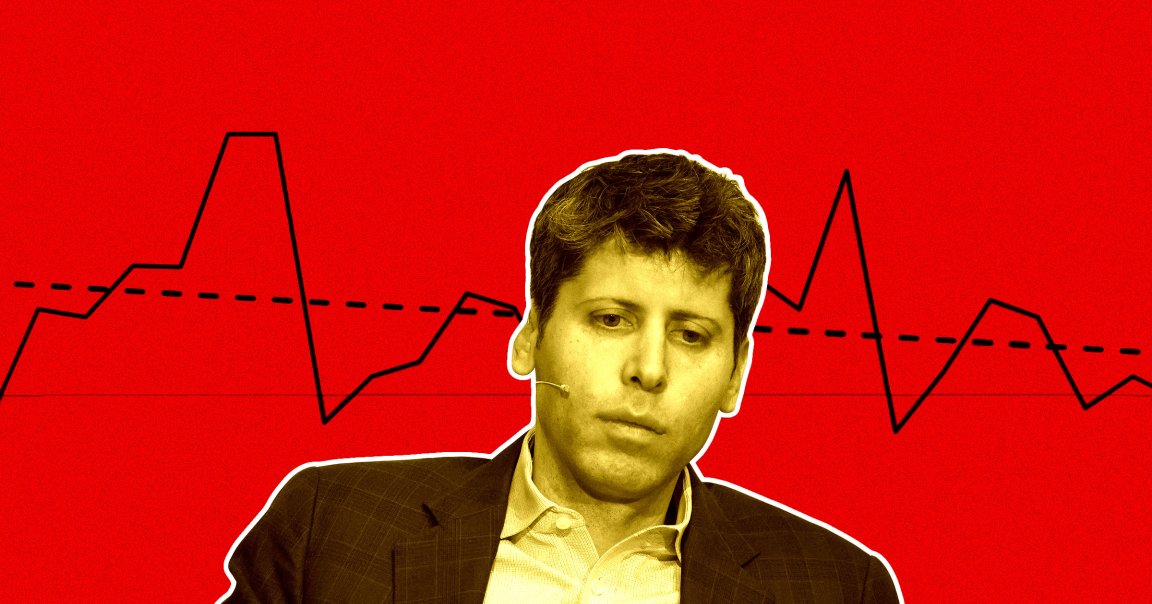
OpenAI is planning to spend more than $1 trillion in AI infrastructure buildouts — an enormous commitment, especially considering its meager income.
Long term, it desperately needs revenue. For now, the vast majority of the money it’s actually bringing in is coming from paying ChatGPT subscribers — and while OpenAI CEO Sam Altman boasted last week that 800 million people are using the AI chatbot on a weekly basis, only roughly five percent of them are paying for a subscription, according to reporting by the Financial Times.
And even ChatGPT revenue may already be plateauing, in what could turn into a major inflection point for an industry already struggling to justify its astronomical spending amid fears of an enormous AI bubble.
According to a Tuesday blog post by the Deutsche Bank Research Institute, first highlighted by Fortune, “European spending on ChatGPT has stalled since May, suggesting the poster child for the AI boom may be struggling to recruit new subscribers to pay for it.”
That’s not to say ChatGPT is bringing in nothing. Europeans spend more on ChatGPT subscriptions than on Disney Plus, according to Deutsche Bank. At its yearly growth rate, it could overtake Spotify in mid-2027 and Netflix in early 2028 — if it can maintain that rate, that is, which hasn’t been looking good for months.
It’s yet another major warning sign, undermining OpenAI leadership’s repeated promises that more computing power from vast data centers will lead to more revenue.
Data analyzed by Deutsche Bank shows that the value of OpenAI subscriptions “has flatlined in the major European markets over the past four months” after surging in early 2023.
For now, OpenAI is going full steam ahead, signing huge contracts with partners including AI chipmakers Nvidia and AMD. The company has committed to delivering 26 gigawatts of computing capacity with their help, almost the amount of electricity required to power the entire state of New York during peak demand.
But with revenue from its flagship chatbot looking dicey, OpenAI could be forced to investigate alternative revenue streams. The Altman-led company is already exploring online advertising, monetizing its latest text-to-video generator app Sora, and a new personal device with the help of former Apple designer Jony Ive.
Whether those will amount to hundreds of billions of revenue to match its sky-high spending remains unclear at best. But that may not even be the goal. Altman has indicated that becoming profitable isn’t a priority for the firm.
With ChatGPT spending growth grinding to a halt in Europe, the company could soon be looking for ways to attract new users. Case in point, the company recently announced that it would allow “mature” ChatGPT apps — despite Altman boasting in August that ChatGPT didn’t host any “sexbots.”
More on OpenAI: If You Were Bankrolling OpenAI, the Percent of ChatGPT Users Willing to Pay for It Might Make You Break Out in a Cold Sweat